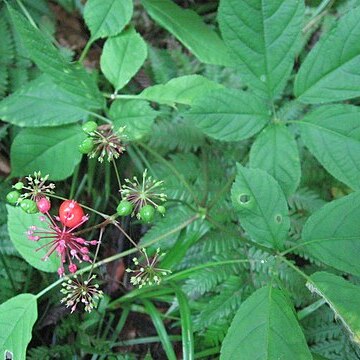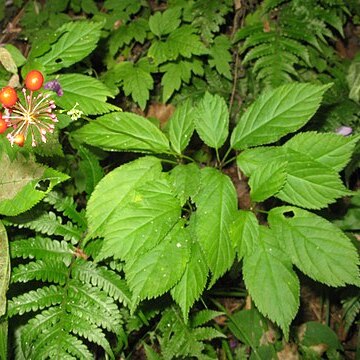A herb. It grows 50-80 cm tall. The rootstock lies along parallel to the ground level. The stems are straight. There are 3-5 leaves. The are compound with 5 leaflets spread out like fingers in a hand. The are narrowly oval and 5-18 cm long by 2-7 cm wide. There are teeth along the edge. The flowers are in flat top groups of 50-80 flowers. The fruit are round and red. They are 5-7 mm across.


